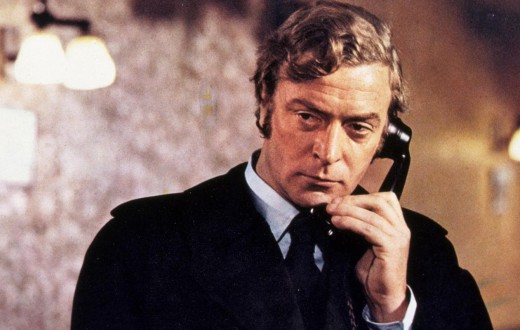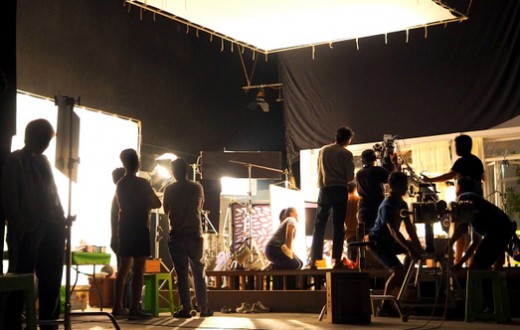There’s an old truism regarding computers and data: garbage in, garbage out. If your data is flawed, you’re going to end up with flawed results.
That should seem obvious, right? But what should also seem obvious but often isn’t discovered until it’s far too late to do anything about it is that if you lay bad groundwork in your pre-production, you may well be dooming your project to mediocrity at best, total disaster at worst.
It’s amazing, too, when you think about how many productions skimp on time, budget, thoughtfulness and detail work in their eagerness to get themselves out there on set and shooting. Especially for productions that are a labor of love, this is truly tragic: if you’re going to pour your heart and soul – not to mention precious resources and the goodwill of your producers, director, writer, crew and actors – into a project, you’d think you would at least want to ensure that you gave it every opportunity to succeed.
Unfortunately, many productions cut corners that hamper or doom their final product before they ever even get off the ground. Here are a few common mistakes to keep in mind and avoid if you’re working on an indie project and ramping up toward production.
Actors Pay Rates – Pay Your Talent
I worked with a stage manager once who made a speech to the running crew on day one of tech. The talk was designed to buoy them up and remind them that everyone working on a show is important, including them. But what she said was “Actors are a dime a dozen. Good crew is harder to find.”
Ouch. Thanks a lot.
But, so, there’s a kernel of truth in there: there are a million actors out there looking for work. You can probably find someone to work for less money on your project.
But you have to be honest with yourself: if you’re really, truly hoping to create the best product possible, is that less-costly person REALLY going to be able to deliver the goods when shooting begins?
Look, we get it. Times are tight. And if you’re part of a creative team that’s ramping up toward production on an indie project, that usually means you’ve got an indie budget too. Its excruciating to make the hard choices about cutting already thin funds from this column on your books and adding them to another column. But the sad truth is, in this world is you get what you pay for.
And remember this: if you’re advertising a project that is no pay, you’re asking actors to take a loss on the deal. They have to pay to get to your audition, to the shoot, and give up their time for nothing – why should they do that for you? At the very least, make your budgetary constraints crystal clear, and at least offer to cover travel costs, provide a decent lunch, and maybe throw them $100 or something – anything to make the actors feel like you appreciate them and consider them a vital part of your team, even if you’re on a shoestring.
SAG-AFTRA New Media contract
One avenue open for low-budget projects to lock down better talent is to use a SAG-AFTRA New Media contract. You’ll need to get to work on the process of becoming a SAG-AFTRA Signatory Producer at least 3 – 6 weeks in advance, with your budget and script ready for them to review. But in the long run, it will be worth it not only to get better talent, but also by forcing you to get the details of your production organized well in advance.
Vet Your Actors
So, we’ve established that you don’t want to sink a project by skimping on pay for talent. Fair enough; it’s ugly, and it’s not 100 percent true, but most of the time, the better someone is at something, the more they can charge for it.
But another place where productions screw themselves is by skimping on time. Again, of course everyone understands that as part of the creative team on an indie project, you’re wearing half a dozen hats and trying to put out just as many fires at any given moment. But one place you need to devote considerable time and focus to is your casting process. Shorting the time you spend on casting can lead to massive headaches down the road and limit the potential for the quality of your final product. You can’t edit around a lead character!
And for the record, live casting calls are fine as far as they go, but far too often a person that appears for those few seconds or minutes to be the perfect catch just doesn’t have the chops once you dig a little deeper. You’ll get the guy or girl with the perfect look, face and energy on set and find out they can’t remember their lines, have no second or third gear, and no ability to make any kind of adjustments. You don’t want that.
Allow yourself time for at least a couple of reads with a prospective actor. Have some fun with some improv. Speaking as an actor, I can tell you we LOVE hearing this at an audition: “How about you guys put down your sides and let’s try something…”
You can learn a whole lot about your actor’s potential to be a productive, intelligent, and contributing member of your team by throwing a couple of low-key, no-pressure improv moments at him or her in the audition.
Self-Tapes
If you have no choice but to rely on self-tape auditions, make sure to set aside time for at least two from each actor. There’s just so much that can be glossed over in a one-minute piece when you’re not in the room – and when the actor can do multiple takes. Another good idea is to use the longest piece of dialogue you reasonably can for the character, just to see how the actor handles it. You don’t want to get them on set and find out that they only work in 15-second snippets of dialogue and no more.
Another great alternative or addendum to the self-tape audition is to get the actor on Skype. This way you can get the closest possible approximation of a live reading as is possible remotely. Plus, you can mimic some of the more enlightening stuff that comes out of in-person auditions, like asking them to improv a bit, and just chatting to get a feel for what kind of person they are and what kind of energy they’ll bring to set.
Create A Team Before You Ever Start Shooting
Finally, another important point to remember is that you’re asking actors to hop on board your particular train of madness and fully embrace the vision you and your production team are attempting to conjure – so make them feel that! Make them WANT to be a part of your team! As you go through the audition process and even from the very outset, lay out who you are, why this project is important to you, what you want in an actor, and what they are going to get out of it if they come aboard. Tell them the story you want to relate on film, tell them about the character in depth and give them something to sink their teeth in to before they ever walk in the door to audition.
Far too many productions make one of two mistakes with casting notices that have the same result: they either play their cards so close to the vest out of fear someone will steal their killer idea that they tell the actor nothing, or they treat the casting notice and character descriptions as a throwaway task that doesn’t really matter – and they tell the actor nothing. If you want to get the best actors doing their best acting from day one of auditions, clue them in as to what the overall vision is, and who they are meant to portray.
You may have a small budget, but if you’ve got the passion and the drive, you can make magic. Just make sure you have a long-term vision as well, and don’t cut corners when it comes to the people who are going to be the face of your project once its completed!







